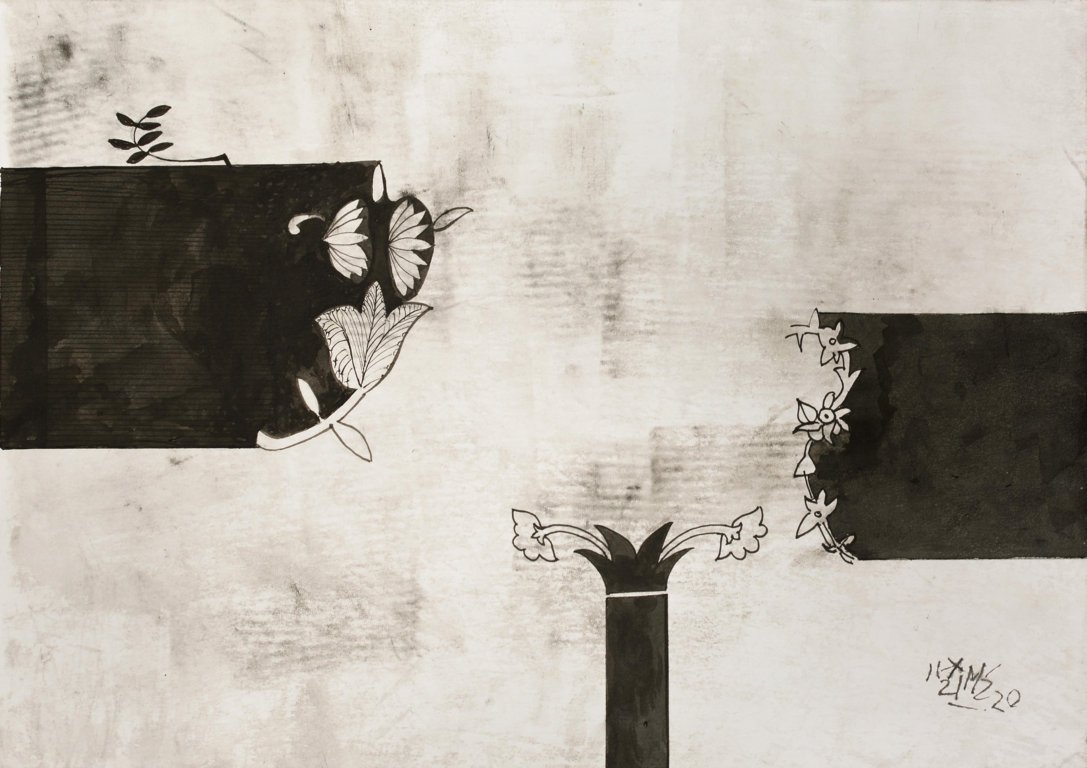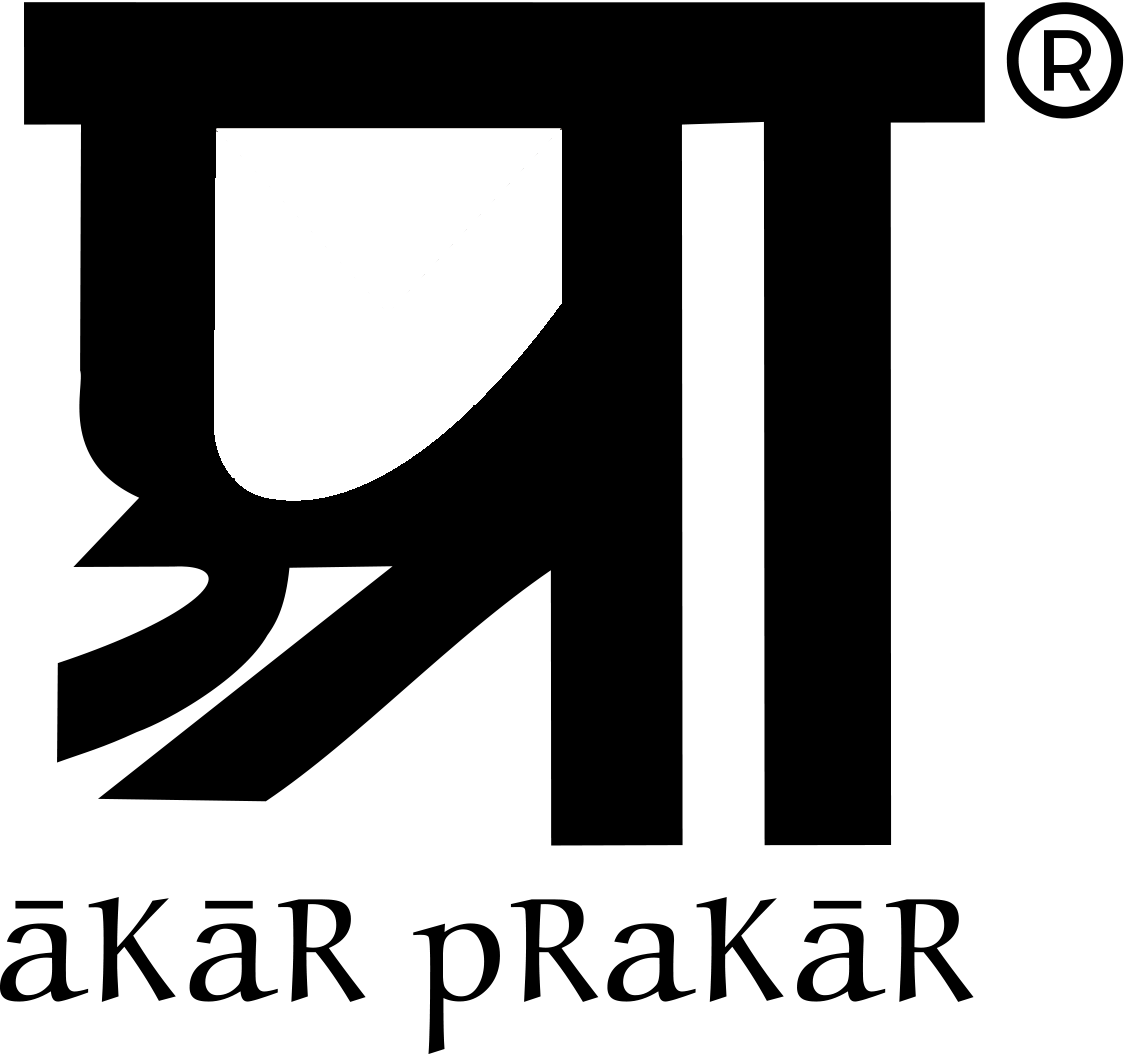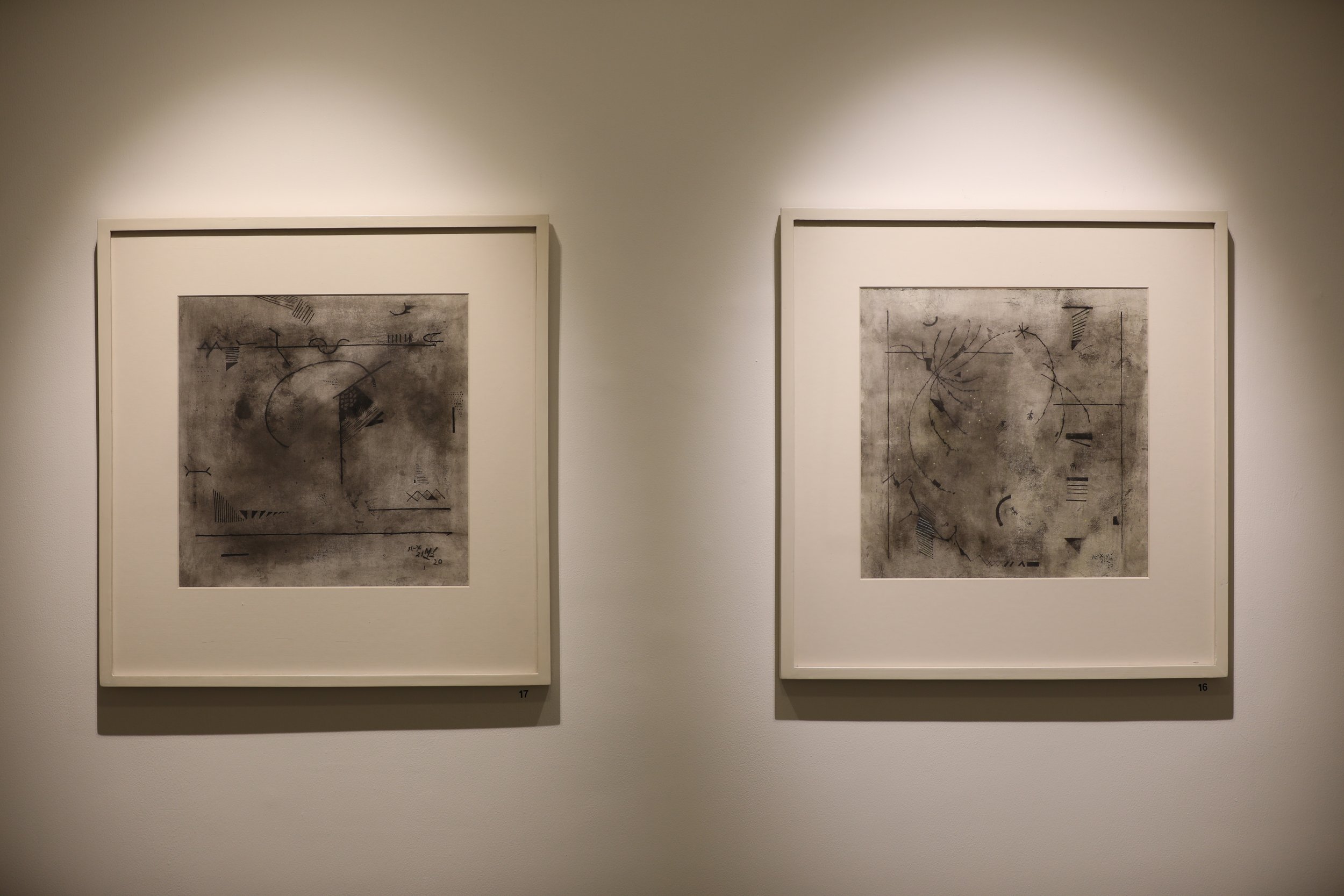
Sense & Sensation by Ganesh Haloi
September 3 – October 30, 2021
Visual aesthetics is founded on the organization of space so as to convey an experience of beauty. Space comes with many expected organizations, which may be utilitarian, symmetric, perspectival, hierarchic, each with its sense of aesthetics.
These mundane forms of organization, with their explicit rationales and literal aesthetics, are “given” to us by the world. When we refuse these conventions, a strange land looms, whose organization arises from the play of objective and subjective singularities. To use the language of Abanindranath Tagore, this play can be called antar-bahir jog. It is the domain of abstraction, where the principles of visual organization, such as form, colour, texture, rhythm, and quality of life-vibrations, are released to become elements and categories of spatial organization forming a subjective language for the objective constituents of world-making.
In these paintings of formal exploration, Haloi often lays out his tools: stippled rectangles or triangles, horizontal, vertical or oblique, laid alongside their inverse, obverse or reverse ideas like matter-spirit couples; a vocabulary of strokes, a gradation of shades, lines with arrowhead or other ends. Natural flowers transpose to stylized relatives from the world of regional arts. Leaves turn emblematic or their presence in the wild is kindled in unlikely urban objects, such as books or manicured forms of interior design. Absence returns in presence and vice versa, often in juxtaposed doubles, territorializing unidentified or fragmented landscapes with flashes of beloved familiarity, or abstracting lines, curves, rhythms, movements, textures from nature. With nature and culture, the materiality of artistic execution is an equal partner in the world of these paintings: brushstrokes that invite related brushstrokes for the rhythmic play of anonymity or random smudges that are made to emulate natural objects and further slowed down for the visual analysis of their abstract properties.
These twenty paintings constitute a welcome to the magic work of Ganesh Haloi, at once the fragrance of regional culture and sensitive riverine landscapes of Bengal, and conceptual abstraction that co-exists like a generative grammar with nature: a language of sense and a language of sensation.
Debashish Banerji
Ganesh Haloi
‘I can sense, feel and even see everything out there and in my works. Not only the tangible physical world and its nurturing forces, but I can also see the elusive atmospheric elements – the ethereal ones like the wind, air, light, darkness, sound, resonance, silence, movement, vibration, rhythm, everything. You can find all these elements in my works.’
Ganesh Haloi was born in Jamalpur, Mymensingh- presently a part of Bangladesh- in 1936. He moved to Calcutta in 1950 following the partition.
The trauma of displacement left its mark on his work as it did on some other painters of his generation. Since then his art has exhibited an innate lyricism coupled with a sense of nostalgia for a lost world. In 1956, he graduated from the Government College of Art and Craft, Calcutta.
In the next year he was appointed by the Archaeological Survey of India to make copies of Ajanta murals. Seven years later, Haloi returned to Calcutta. From 1963 until his retirement, he taught at the Government College of Art and Craft. He is a Member of The Society of Contemporary Artists, Calcutta since 1971, and lives and works in Calcutta. He has participated in several group exhibitions in India, Greece/Germany (Documenta 14 at Athens & Kassel), California (Architecture of Life, at Berkeley Art Museum & Pacific Film Archives (BAM/PFA), Berkeley), Berlin (8th Berlin Biennale for Contemporary Art), London (A Special Arrow Was Shot in the Neck, David Roberts Art Foundation) and New York (Past Parallels: The Art of Modern & Pre-Modern India at Aicon Gallery). He is represented by Akar Prakar Kolkata and New Delhi, and has had various solo exhibitions in Kolkata, Delhi, Mumbai and Dhaka. He has recently been awarded the Lifetime Achievement Award (2019) by India Today. In October 2020, a retrospective of Haloi will be hosted by Chhatrapati Shivaji Maharaj Vastu Sangrahalaya (CSMVS), Mumbai, in collaboration with Kiran Nadar Museum of Art (KNMA), with the support of Akar Prakar. The retrospective will be curated by Roobina Karode, Director and Chief Curator, KNMA. His artworks were exhibited in Asia Week New York (AWNY) in March 2020.
























